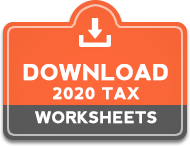
Donation
September 13, 2019
‘They told me it was untaxable in 1965’
November 6, 2019TAXABLE BENEFIT: Parking Pass
In a June 10, 2019 Federal Court of Appeal case, the Court upheld the previous Tax Court decision which classified an employer-provided parking pass as a taxable benefit to an employee of an airline. However, in doing so, the Court provided differing reasons which may affect employees in all sectors.
Taxpayer loses
In the previous Tax Court case, the argument focused on whether the primary beneficiary of the pass was the employer or the employee. However, in this decision, the Federal Court of Appeal stated that the ultimate goal should be determining whether the employer conferred something of economic value on the employee. The determination of whether the employee was the primary beneficiary is useful in determining whether an economic benefit was conferred but is not the ultimate test in and of itself. Instead, the factors weighed in the primary beneficiary test may help determine that there was only incidental or no personal economic benefit, in which case it would not be a taxable benefit.
The Court also noted that the fact that the good or service provided is necessary for the discharge of employment-related activities is relevant in drawing an inference about whether it is also providing a personal benefit to employees. Basically, if the benefit provided is necessary for the employee to do their job, it is less likely personal.
Since having the employee’s car at work was not necessary to, or required by, the employer, the Court determined that the cost of parking was a personal expense and, therefore, a personal benefit.
ACTION ITEM: This case may result in a change in CRA assessing policy. Benefits not previously taxed may need to be reviewed in the upcoming year to determine if they are now taxable.
___________________________________________________________________________
PROPERTY FLIPPING: Income or Capital?
In an August 14, 2019 Tax Court of Canada case, at issue was whether the sales of four properties in B.C. were on account of income (fully taxable) or capital (half taxable), and whether they were eligible for the principal residence exemption (potentially tax-free) as claimed by the taxpayer, a real estate agent. Essentially, the Court was trying to determine if the properties were purchased with the intent to re-sell for a profit, or for personal use.
The properties were sold in 2006, 2008 and 2010 for a total of $5,784,000 and an estimated profit of $2,234,419. None of the dispositions had been reported in the taxpayer’s income tax returns. Three of the properties were residences located in Vancouver, and the fourth was a vacant lot on an island off the coast of B.C. The taxpayer was also assessed with $578,040 in uncollected, unremitted GST/HST and associated interest and penalties. At the outset of the hearing, CRA conceded that the vacant property sale was on account of capital and, therefore, not subject to GST/HST. Gross negligence penalties were also assessed.
The taxpayer argued that he had purchased and developed each of the three properties with the intention to live in them as his principal residence, but changes in circumstances forced him to sell. CRA, on the other hand, argued that the taxpayer was developing the properties with the intention to sell at a profit and was therefore conducting a business. To make a determination, the Court considered the following factors.
Nature of the properties
While a house, in and of itself, is not particularly indicative of capital property or business inventory, the nature of the rapidly increasing housing prices in Vancouver, the fact that the taxpayer was a real estate professional knowledgeable of the potential gains, and the fact that the properties were run down, indicated that the purchases were speculative in nature, all of which suggested that the transactions were on account of income.
Length of ownership
The properties were owned for a year and a half on average. During that time, the original houses were demolished, new homes were built, and then they were listed and sold. The Court found that the homes were under construction substantially all of the time that they were owned and were sold shortly after construction. In particular, the Court stated that it appeared as if the taxpayer was selling homes as he developed them while trying to meet the requirements for the principal residence exemption to avoid paying tax. The short holding and personal use periods suggested that they were held on account of income.
Frequency or number of similar transactions
Not only did the taxpayer rebuild the three homes in question, but he also conducted similar activities for his corporation, his father, and his girlfriend/spouse. This indicated that he was in the business of developing properties.
Extent of work on properties
During the periods in question, it was apparent that the taxpayer expended a “good deal of time” purchasing, redeveloping and selling the three homes. Further, based on his low reported income (approximately $15,000 – $20,000 per year) and lack of material real estate commission income earned from unrelated third parties, the majority of his time and work appeared to be focused on the properties. This suggested that amounts were received on account of income.
Circumstances leading to the sales
The taxpayer provided a number of reasons for the sales. One reason cited was that unexpected personal expenses and accumulated debts forced the sales. However, the Court questioned this reason, noting that each sale was followed by the purchase of a more expensive property, and there was no indication of other restructuring or sale of personal items (like his airplane). The taxpayer also stated that other reasons for sale included a desire to move with his son closer to his school and mother, and a desire to move in with his elderly parents to provide full-time care. However, the Court found support for such assertions lacking, and in some cases contradictory, adding that they were neither credible nor plausible.
Further, there was no indication that the taxpayer could afford to actually live in the properties based on his available assets and reported income.
Taxpayer loses – on account of income
The Court concluded that the motive for the sales were not personal as stated by the taxpayer but, rather, in pursuit of profit (sold on account of income) and not eligible for capital gains treatment. As the gains were not capital in nature, the principal residence exemption could not apply.
Taxpayer loses – no principal residence exemption
The Court also chose to opine on whether the principal residence exemption would have been available had the properties been held on account of capital. In particular, it considered whether the taxpayer “ordinarily inhabited” any of the properties prior to sale.
Other than testimony from the taxpayer and his son, which was found unreliable, the only other support provided was bills for expenses such as gas and insurance, which the Court noted would have also been incurred during the redevelopment even if he never lived there. There were no cable or internet bills and no evidence that he used the addresses for bank, credit card, driver’s licence, or tax return purposes. Further, the real estate listings for the houses described them as new and provided a budget for appliances. During the period, he also had access to a number of other properties which included those of his girlfriend/spouse and parents. Due to the lack of support demonstrating that he actually resided in the properties, and the fact that he had many other places in which to live, the Court concluded that he did not “ordinarily inhabit” any of the properties, therefore would not have been eligible for the exemption in any case.
Taxpayer loses – gross negligence penalties
The Court viewed the taxpayer as a knowledgeable business person, real estate developer, and real estate agent with many years’ experience who understood tax reporting obligations in relation to real estate development activities. He had specifically asked both his accountant and CRA about the principal residence rules. Given the taxpayer’s knowledge and experience, he should have been alerted to the fact that the gains should have been reported, or at least sought professional advice on whether the principal residence exemption would have been available for those specific sales. Further, he had neglected to report the gain on the vacant land, stating that he forgot. This indicated at least willful blindness given the magnitude of the gain ($126,000) in comparison to his very low reported income. All in all, the Court found that the taxpayer made false statements or omissions of the type and significance to constitute willful blindness or gross negligence. The penalties were upheld.
Taxpayer loses – GST/HST
The Court found that the taxpayer met the definition of a “builder” in the Excise Tax Act. A builder includes a person that has an interest in the real property at the time when the person carries on, or engages another person to carry on, the construction or substantial renovation of the complex. However, an individual is excluded from being a “builder” unless they are acting in the course of a business or an adventure or concern in the nature trade. Since the Court had determined that the individual taxpayer was carrying on a business, this exclusion would not apply, resulting in the sales being subject to GST/HST.
Taxpayer loses – GST/HST penalties
The taxpayer was also assessed penalties for failure to file GST/HST returns and late remittance of GST/HST. The Court found that the taxpayer did not demonstrate sufficient due diligence to merit protection from the penalties.
ACTION ITEM: If moving out of a property that was occupied for a short period, ensure you maintain documents and proof that you had intended to establish residential roots and live there.
___________________________________________________________________________
UNCLAIMED BANK DEPOSITS OR PROPERTY: Could Christmas Come Early?
Unclaimed property refers to accounts at banks, financial institutions, and other organizations where there has been no activity generated or contact with the owner for a period. Typical forms of unclaimed property can include chequing or savings accounts, term deposits, Guaranteed Investment Certificates (GICs), bank drafts, traveller’s cheques, money orders, and certified cheques. A number of different organizations (depending on the governing legislation) collect these funds and administer the return to their rightful owner, where possible.
As banks fall under federal jurisdiction, they are required to report unclaimed funds to the Bank of Canada. To search the Bank of Canada database for unclaimed amounts, go to https://ubmswww.bank-banque-canada.ca/en/Property/SearchIndex. At the end of 2018 approximately 2 million unclaimed balances, valued at $816 million, were held by the bank, with $11 million being paid out in the year. Of interest, the oldest balance dates back to 1900.
Three provinces, Alberta, B.C. and Quebec, have unclaimed property legislation. Each province’s rules differ for determining when dormant accounts are “unclaimed”, reporting requirements, due diligence, and enforcement requirements. Information and a search engine for these provinces can be found at:
- Alberta – https://www.alberta.ca/unclaimed-property.aspx
- British Columbia – https://unclaimedpropertybc.ca/
- Quebec – https://www.revenuquebec.ca/en/site-map/map-of-the-unclaimed-property-section/
In addition, many states in the U.S. also have databases whereby unclaimed property may be searched. For more information and to be directed to information for particular states, go to the National Association of Unclaimed Property Administrators at https://www.unclaimed.org/.
ACTION ITEM: See if you are eligible to claim any unclaimed property.
___________________________________________________________________________
PROTECTING YOUR TAX INFORMATION: Comments from CRA
CRA released a Tax Tip (Protecting your personal information) on August 6, 2019 which provided various suggestions to safeguard tax information, including the following:
- Signing up for My Account or My Business Account and registering for email notifications. Notifications will be sent when paper mail is returned to CRA, or when certain other changes are made on one’s account.
- Using CRA protocols to authenticate a caller’s identity. An option is being introduced to set a unique Personal Identification Number which must be provided before a call centre agent can access the individual’s accounts.
- Verifying a purported CRA caller by requesting their badge number and calling the individual or business enquiries line for confirmation.
The Tip also provides guidance on steps individuals who may be victims of identity theft should take, including contacting CRA to request enhanced security measures be placed on their accounts.
ACTION ITEM: Review the above suggestions and adopt those that are appropriate.
___________________________________________________________________________
LOAN FROM A SIBLING’S CORPORATION: Is it Taxable?
In a July 8, 2019 Tax Court of Canada case, CRA had reassessed the taxpayer to add loans received from a corporation controlled by her brother and his wife to her income. Special rules apply to loans advanced from a corporation to a shareholder or a “connected person” (which includes any related person). These rules effectively require an income inclusion in the hands of the borrower if loans are not repaid by the end of the corporation’s year following the year in which the loan was advanced.
Loan from corporation – taxpayer loses
The Court held that the taxpayer had made a misrepresentation by failing to report the loans as income. Her knowledge that she had borrowed $45,000 from a corporation controlled by family members over the period from 2009 to 2012, and her failure to seek advice from anyone, including the corporation’s accountant, regarding the tax implications of such a loan was sufficient neglect or carelessness to permit reassessment of each year in which funds were advanced, even beyond the ordinary three-year reassessment period. As the loans had not been repaid in time, the full amounts were included in income.
ACTION ITEM: Advice should be sought if you currently have, or are considering, personal loans to a shareholder of a corporation, or a family member.
___________________________________________________________________________
EMPLOYMENT EXPENSES: Commuting?
In an August 15, 2019 Tax Court of Canada case, at issue was the deductibility of a number of employment expenses (primarily travel, lodging and motor vehicle expenses) incurred by the taxpayer. While the taxpayer resided in Ottawa, he signed an employment contract with a company based in Regina. The employment contract stated that the new employment position would be “based from our yet to be determined office in Ottawa, Ontario.” For the 2012 and 2013 tax years, the taxpayer shuttled by air between Ottawa and Regina weekly. In order to deduct travel costs incurred by the employee, the employee must have been required to travel away from the employer’s place of business.
The taxpayer argued that his home in Ottawa was a place of employment, and therefore, costs of travel between his work location in Ottawa, and the work location in Regina, were deductible as they were incurred in the course of employment.
Taxpayer loses, mostly
The Court rejected the taxpayer’s assertion, finding that the employer did not have a place of business in Ottawa. The Court observed that the fact that the employee might choose to “squeeze in” work (in this case on some Mondays or Fridays) at his home in Ottawa did not, without more, constitute the home being an employment location. Further, there were no photographs of the home office, testimony describing it, or home office expenses claimed. The Court stated that the employment contract did not alter its decision as there was no evidence that the employer made any effort to find an office in Ottawa, and no evidence related to work pertinent to Ottawa was provided.
As such, travel between Ottawa and Regina was personal, and the associated lodging and travel costs were denied.
The Court also reiterated that the appeal was considered without regard to the distance between the employee’s home and the employer assigned office: the two locations could be in the same municipality or different provinces. In other words, commuting to work, no matter how far, is considered personal. However, note that there are some exceptions to this rule, such as where the individual travels to a temporary special work site, or a remote work location.
ACTION ITEM: If considering the acceptance of employment that requires significant commuting, consider that the commuting costs likely will not be deductible.
___________________________________________________________________________
TRUSTS FOR DISABLED BENEFICIARIES: Good News!
One common planning technique for disabled individuals involves the use of a trust under which the trustees possess ultimate discretion over any distributions to be made. In other words, the beneficiary has no enforceable right to receive any distributions from the trust unless or until the trustees exercise their discretion in the beneficiary’s favour. The intent of such a trust is that the trust assets not be considered assets of the beneficiary, such that they will not influence the beneficiary’s eligibility for various social benefits. Such a trust is commonly referred to as a “Henson trust”.
In a January 25, 2019 Supreme Court of Canada case, a disabled individual (SA) was denied rent assistance on the basis that the assets of a trust under her father’s will were considered to be assets in which she had a beneficial interest. SA had refused to provide information on the trust’s assets to the program administrator (MVHC) in conjunction with her annual application for rent assistance.
Consistent with a “Henson trust”, the trust terms appointed SA and her sister as trustees, required two trustees at all times, and provided the trustees with discretion to pay as much of the income or capital as they “decide is necessary or advisable” for SA’s maintenance or benefit. The terms also provided that any remaining assets at the time of SA’s death be distributed in accordance with her will, or intestacy law if her will did not provide direction. Finally, in the event of her sister’s inability or unwillingness to serve as trustee, SA could appoint a replacement trustee.
Individual wins
The Court held that the term “assets” as used in the program documentation did not include the discretionary trust interest, which was more akin to “a mere hope” of future distributions. It was reasonable for MVHC to require details of the trust structure, and SA had previously provided that legal documentation. As SA’s interest in the trust was not an asset, MVHC could not require disclosure of details of the trust assets as a condition of her rental assistance. MVHC was required to exclude the trust assets from the total assets considered when determining available rental assistance. MVHC was also required to compensate her for assistance denied to date.
Limitations to the ruling
The Court noted that this does not mean that the interest of a disabled person in a “Henson trust” could never be treated as an asset. This would depend on the rules and regulations governing the relevant program.
ACTION ITEM: The judges’ comments indicate that each program’s terms must be examined to determine whether such a trust interest would properly be considered an asset of the individual. Consider whether a Henson trust would benefit a disabled relative.
___________________________________________________________________________







